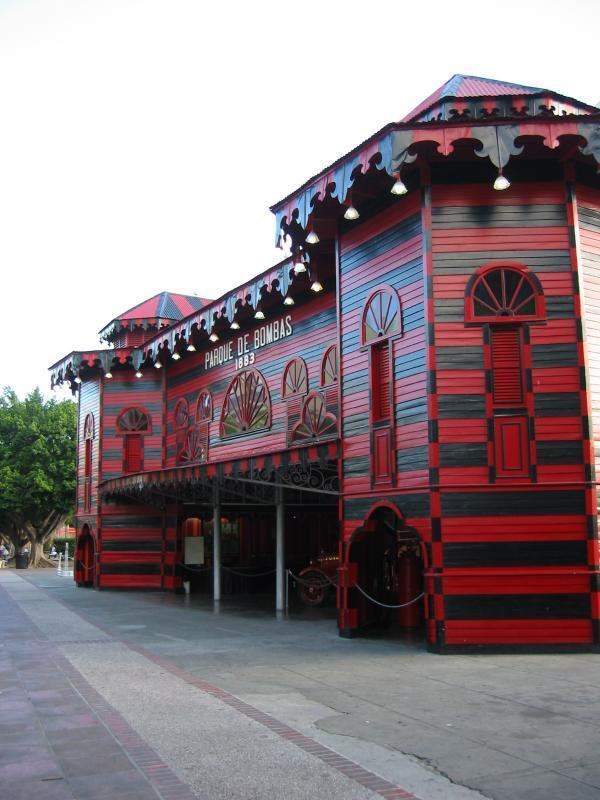 | ||
Similar Armstrong‑Toro House, Banco Credito y Ahorro P, Paseo Atocha, Teatro Fox Delicias, Fernando Luis Toro Casa | ||
Ponce historic zone calles marina cristina bulevar miguel pou
The Ponce Historic Zone (La Zona Histórica de Ponce) is a historic district in downtown Ponce, Puerto Rico, consisting of buildings and structures with architecture that date to the late nineteenth and early twentieth centuries.
Contents
- Ponce historic zone calles marina cristina bulevar miguel pou
- Location
- Ponce en Marcha
- Designation categories
- Sub zones
- References
The zone was originally designated in 1962, and initially included only the center core of the city, but it has since been expanded to include a much larger area. On November 17, 2005, then-Governor of Puerto Rico, Aníbal Acevedo Vilá, signed Executive Order Number 72, approving the historic Ponce center as a Historic Center of First Order. The zone goes by various names, including Ponce Tradicional (Traditional Ponce), Ponce Centro (Ponce Center), Ponce Histórico (Historic Ponce), and Distrito Histórico (Historic District).
Location
The zone is located in what is commonly called Ponce Pueblo ("Ponce Town") – the central downtown and oldest area of the city. While there are several roads that lead to it, the most typical point of entry is via PR-1 which, at its southern terminus, becomes Lolita Tizol street and turns into Isabel street, leading to the heart of Ponce at the Plaza Las Delicias. A map of the area covered by the Ponce Historic Zone is available from the government of the municipality of Ponce.
In addition to Plaza Las Delicias with its unique Parque de Bombas and Nuestra Señora de la Guadalupe Cathedral, the zone includes landmarks such as Ponce City Hall, Armstrong-Poventud Residence, Ponce High School, and Panteón Nacional Román Baldorioty de Castro. Numerous other attractions in this historic area are listed in the NRHP, such as Banco de Ponce, Casa Paoli, and Casa de la Masacre. Others, such as Teatro Fox Delicias, Teatro La Perla, Plaza de Mercado, Hotel Meliá, and Paseo Atocha are not listed but possess significant historical value. Street corners in most of this zone have chamfered corners (Spanish: esquinas de chaflán), typical of Barcelona, Spain.
Ponce en Marcha
In recent years an intensive $440 million revitalization project called "Ponce en Marcha" ("Ponce on the Move") has increased the city's historic area from 260 to 1,046 buildings. The Ponce en Marcha project was conceived in 1985 by then governor Rafael Hernández Colón during his second term in La Fortaleza. A significant number of buildings in Ponce are listed in the National Register of Historic Places. The nonprofit Project for Public Places listed the historic downtown Ponce city center as one of the 60 of the World's Great Places, for its "graciously preserved showcase of Caribbean culture". The Ponce en Marcha project has given even more form to the definition, establishment, and development of the Ponce Historic Zone. The plan is the result of litigation between the Government of the Autonomous Municipality of Ponce and the Government of Puerto Rico.
The Ponce en Marcha plan projects involve several departments of the Government of Puerto Rico:
Designation categories
Structures within the historic zone are classified into four categories:
Sub-zones
The historic zone itself consists of three distinct sub-zones:
In August, 2003, Mayor Cordero favored a measure to exclude Belgica, Claussells, and Cantera — all poor, low-income communities — from the historic zone.
